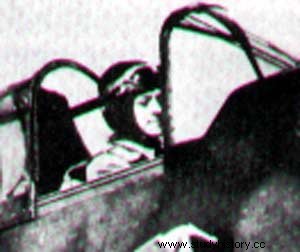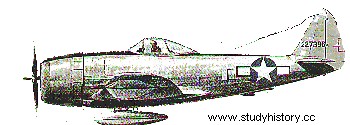Victory
16
Biography

The most talented of all the French pilots who participated in the campaign of France was born in Valenciennes on February 5, 1912. After the Grandes Ecoles, he studied at the Morane pilot school and obtained his pilot's license on August 1, 1931. Anticipating the call, he volunteered for the school of Reserve Officers, in November of the same year. he became second lieutenant on September 20, 1932. La Meslée was then assigned to the 2nd Fighter Regiment in Strasbourg and at the end of his military service, he enlisted for two years with the rank of sergeant. In September 1936, he decided to pursue a career in the Air Force and was assigned in October 1937 to Spa 67, then belonging to GC 115, as a second lieutenant. He was flying H-75s under the command of Jean Accart when war broke out. On July 27, 1939, GC 115 had moved to its operational base in Suippes and it was from there that Marin La Meslée hoped to actually do the job he had chosen and trained for. At this time contact with the enemy was rare, and he had to wait until January 11, 1940 to surprise a Do 1 7P of 3.(F)/11 above Verdun and bring it down with the help of du Slt Rey, in Longwy, near the German border. He wrote a letter, which describes one of the clashes, it is dated January 1940 and published in Icare n '53 "The Phoney War" page 88. Then, this letter was given to Jean Accart.

His next victories were obtained on May 12, two days after the outbreak of the German assault, when his patrol attacked 20 Ju 87s which were dive-bombing French infantry in the Ardennes. Surprising the Stukas without hunting cover, the French went on the hunt. The iC 115 claimed a dozen victories, three were confirmed and four deemed possible for Marin La Meslée alone. The next day he shot down a Bf 109. On May 15 he shared an Hs 126, the next day a Do 218, on May 18 three He 111s of a formation of 21 and on May 19 another Heinkel bomber. May 24, where he shot down an Hs 126 near Saint-Loup and shared another the next day. A He 111 followed on May 26, which Marin La Meslée shared with eight other members of his squadron. Often outnumbered, he returned with his plane full of holes and, in recognition of his very combative spirit, his superiors appointed him commander of the group to replace Accart, who was hospitalized on June 1.
On 3 June he shared the destruction of an Hs 126, with a possible Do 17 and four days later, over Soissons, he claimed two further possible victories (a Ju 88 and another Hs 126). His last victory was obtained jointly on June 10 against a new Ju 88 which crashed near Châtillon-sur-Bar. Holder of 16 sure victories and four possible, on June 25, 1940, he had withdrawn to Algeria with his group.

For the next two and a half years, Marin La Meslée waited opportunity to be able to resume the fight. After the Torch landings, his group was equipped with P-39 Airacobra and carried out convoy escort and coastal patrol missions. During the winter of 1944-1945, his unit was finally able to take part in operations to liberate the homeland and, on February 4, 1945, Cdt Marin La Meslée was at the head of his unit, baptized "Champagne", and equipped with P- 47 Thunderbolt for an attack on a convoy of German vehicles in Hart Forest. During his first pass, a vehicle burst into flames, forming a thick cloud of smoke that intensely obscured his field of vision.

When he tried to climb, he was hit head-on by a 40mm shells and his plane slowly fell. Taken out of his cockpit by German troops, he was found mortally wounded by shrapnel in the head. Today, a gigantic stone star representing the French pilot's license star marks the spot where he fell. He is buried in one of the branches of this star.

